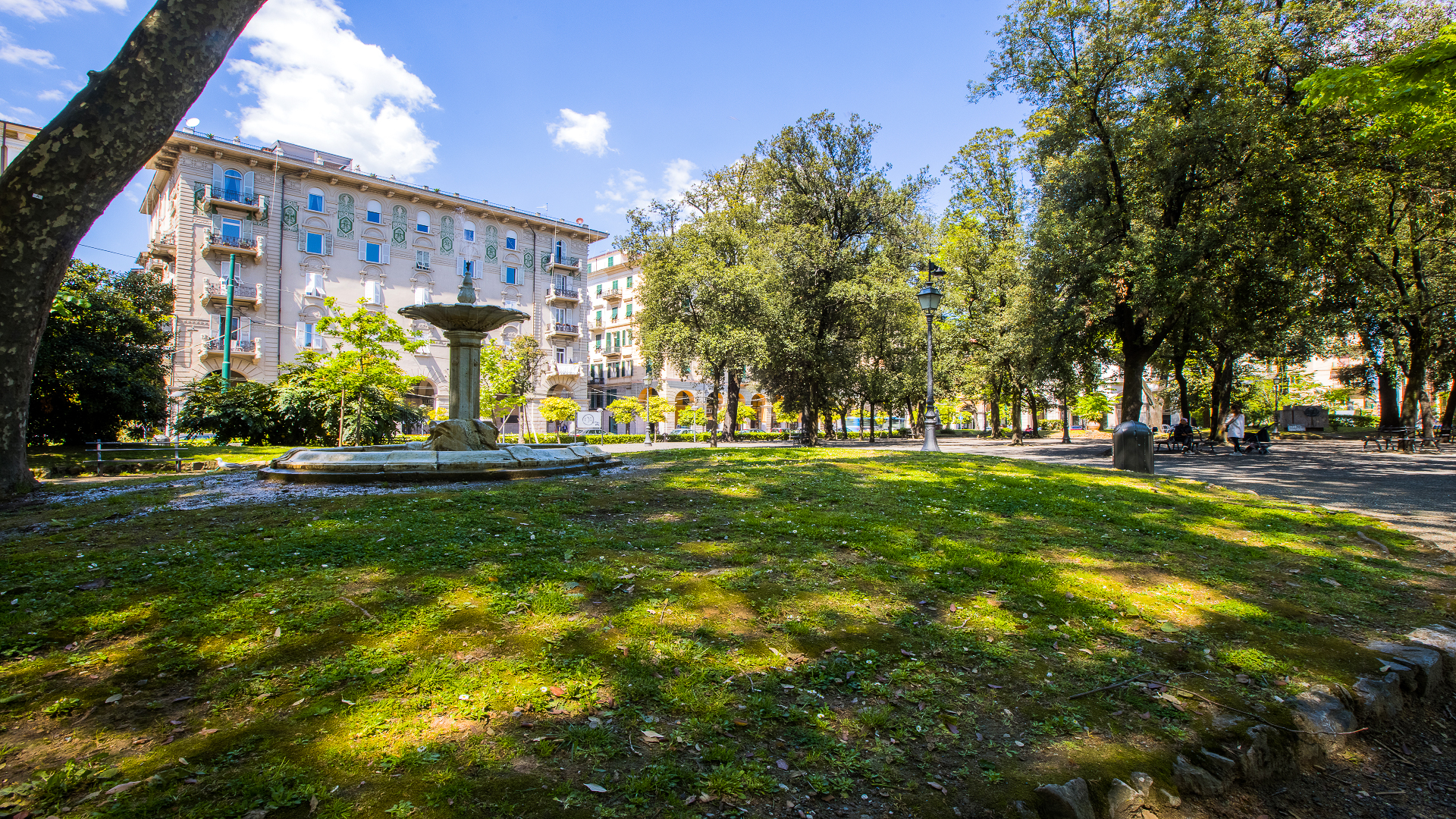Historical Gardens
The public gardens of La Spezia, placed along Via Chiodo, are the historical gardens of the city, offering citizens and tourists a green area in the center. The core of these gardens was created in 1825 and was called the Boschetto (literally, the Grove). Today, this place hosts the “Palco della Musica” (literally, “the stage of music”), a splendid Art Nouveau work, several busts of the most distinguished citizens of La Spezia, and many evergreen plants symbolizing the changing seasons.
The gardens are crossed by a bike path, running throughout the whole city and culminating with a wonderful view where you can take amazing pictures of the city.
Moving towards Via Diaz, there is a marble fountain consisting of a column placed at the center of a small basin buried below the soil. On the top of the column, there is a goblet-shaped container where, in the past, a gush of water came out from.
The monument is made of a series of Bardiglio marble blocks placed one on top of the other, creating a monolithic-looking structure.
At the heart of these gardens there is the bronze statue of Giuseppe Garibaldi, one of the founding fathers of the unification of Italy, riding his horse. This work is of interest also because of the sculpture solution, portraying the horse reared up.
Inside the public gardens, there are also the Centro Allende and its little pine wood, where many cultural events, conferences, and exhibitions take place.
Address
Via Armando Diaz, La SpeziaInteresting facts

The city gardens are perfect to wander, immersed in a Neoclassical atmosphere with tree-lined streets creating the shape of a cross in the circular square. Once, these trees followed the wall of Marquis Castagnola’s vegetable garden on one side and, on the other, the current Via Da Passano, where the city Beach Establishment facilities were built back then.
titolo popup
descrizione popup



